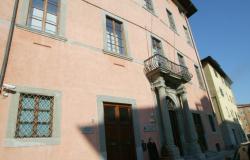In Lazio, the pine forest of the presidential estate of Castelporziano, one of the most beautiful in Italy, practically no longer exists. The pine trees were attacked by turtle cochineal which sucks their sap until it leads them to death. In the Pisan there are thousands affected, in Tirrenia, in Marina di Pisa, inside Camp Darby and up to the San Rossore park.
A death sentence for the pine forests of the Tuscan coast since the cochineal, arrived from America, reproduces 3-4 times a year, each female lays up to 500 eggs at a time: in three years a male and a female can reproduce 7 billion insects.
In Pisa, the Region and the Municipality are fighting a battle, pine after pine, to try to save the pine forests attacked by the insect but with great difficulty. And little hope due to the size of the affected area. «As soon as the outbreak was identified – he says Dalia Del Nista, inspector of harmful organisms in the forestry sector for the phytosanitary service of the Tuscany Region – we intervened with endotherapy on 170 plants, they involve injections of insecticides on the trunks, from here they go up to the foliage and kill the cochineal. The Municipality of Pisa will take action to treat another 800 plants. A demarcated area has been created and a second buffer zone which we monitor. We have activated financing to allow interventions in private gardens. Culling of plants is only considered in the case of terminal conditions. The area is large, it’s true, but we are fighting for eradication. In San Rossore there are no pine trees attacked yet, we are in close contact with the Park. I’m not optimistic, I can’t be, but Crea is doing research: we are in the hands of an “insect”.
Here is what could be the only solution, under penalty of the disappearance of our pine forests because “the turtle cochineal is transported by the wind”.
The damage it could do is enormous. «Tuscany cannot yet imagine them», he intervenes Pius Federico Roversi, director of Crea–dc, the government research center and leading expert in Italy on turtle cochineal. He is the one who was appointed by the ministry to understand if there is a solution. And they are two researchers from the Center who went to the Turk and Caicos Islands, in the Caribbean, to understand why the Caribbean pine, almost extinct, had started growing again for some time. «We wondered why the cochineal didn’t do more damage there, we suspected there was a natural enemy. The researchers returned with a ladybug, the Thalassa Mount Zumae. We did some checks to understand if this ladybug is really that “good” but above all if inserting it into our system could have an environmental impact that is not compatible with our ecosystem. The law provides for it when we want to carry out biological control interventions.”
The results are considered “interesting”, the work has been published and tomorrow will be presented at the University of Naples by the Italian Entomological Society. «At the beginning of the summer the request will be presented to the Ministry of the Environment to insert the ladybug into nature. We have already made contact with the Regions of Tuscany, Lazio and Campania, the most affected, to ask for the green light for the project. If all goes well, we plan to launch the antagonist ladybug, which eats cochineal, by spring next year.”
The fear is that there is not enough time to save the Tuscan pine forests and the San Rossore park. «If these are the times – concludes director Roversi – we can do it. Just tomorrow (today ed) I will meet the director of the Park to understand how to move forward, what to do. There is no health treatment that cures plants other than endotherapy injections which, however, have temporary usefulness.”






